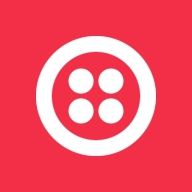

Find out in this report how the two Web Analytics solutions compare in terms of features, pricing, service and support, easy of deployment, and ROI.


Segment is a customer data platform that helps organizations collect, unify, and analyze customer data from various sources. Its primary use case is to provide a single view of the customer across different touchpoints, enabling businesses to deliver personalized experiences.
The most valuable functionality of Segment is its ability to integrate with numerous data sources, such as websites, mobile apps, and third-party tools. It simplifies the process of data collection and unification, allowing organizations to easily access and analyze customer data in real time.
Segment helps organizations by providing a comprehensive understanding of their customer's behavior, preferences, and interactions. This valuable insight enables businesses to make data-driven decisions, optimize marketing campaigns, and improve customer engagement. By leveraging Segment's capabilities, organizations can enhance customer experiences, increase customer satisfaction, and drive business growth.
We monitor all Web Analytics reviews to prevent fraudulent reviews and keep review quality high. We do not post reviews by company employees or direct competitors. We validate each review for authenticity via cross-reference with LinkedIn, and personal follow-up with the reviewer when necessary.